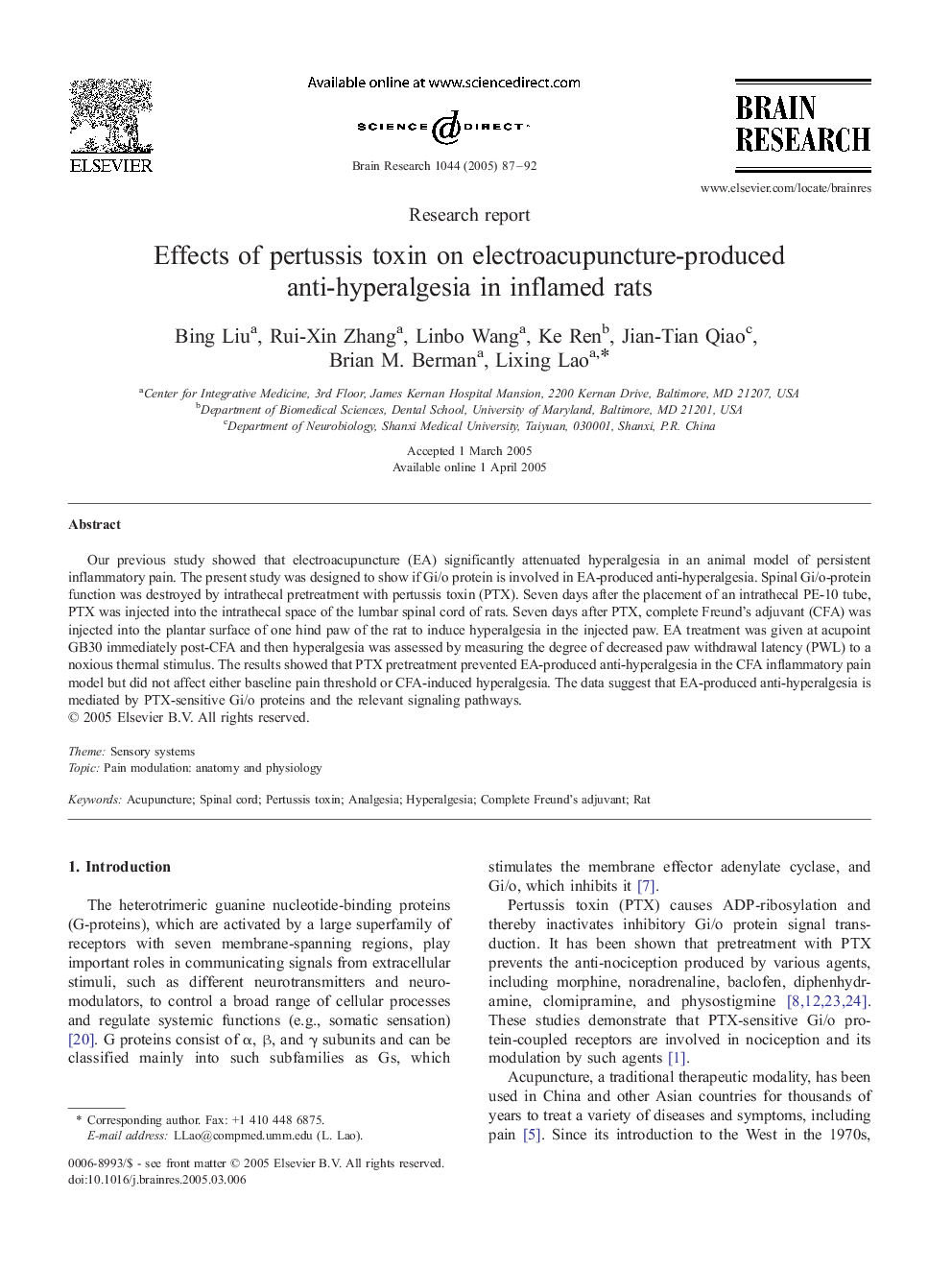| Article ID | Journal | Published Year | Pages | File Type |
|---|---|---|---|---|
| 9416400 | Brain Research | 2005 | 6 Pages |
Abstract
Our previous study showed that electroacupuncture (EA) significantly attenuated hyperalgesia in an animal model of persistent inflammatory pain. The present study was designed to show if Gi/o protein is involved in EA-produced anti-hyperalgesia. Spinal Gi/o-protein function was destroyed by intrathecal pretreatment with pertussis toxin (PTX). Seven days after the placement of an intrathecal PE-10 tube, PTX was injected into the intrathecal space of the lumbar spinal cord of rats. Seven days after PTX, complete Freund's adjuvant (CFA) was injected into the plantar surface of one hind paw of the rat to induce hyperalgesia in the injected paw. EA treatment was given at acupoint GB30 immediately post-CFA and then hyperalgesia was assessed by measuring the degree of decreased paw withdrawal latency (PWL) to a noxious thermal stimulus. The results showed that PTX pretreatment prevented EA-produced anti-hyperalgesia in the CFA inflammatory pain model but did not affect either baseline pain threshold or CFA-induced hyperalgesia. The data suggest that EA-produced anti-hyperalgesia is mediated by PTX-sensitive Gi/o proteins and the relevant signaling pathways.
Keywords
Related Topics
Life Sciences
Neuroscience
Neuroscience (General)
Authors
Bing Liu, Rui-Xin Zhang, Linbo Wang, Ke Ren, Jian-Tian Qiao, Brian M. Berman, Lixing Lao,
